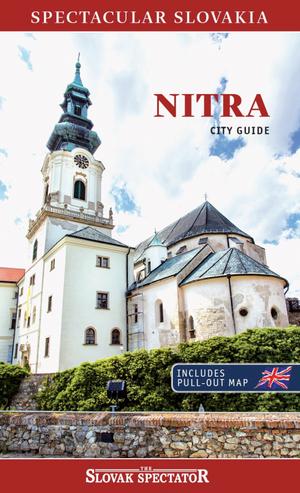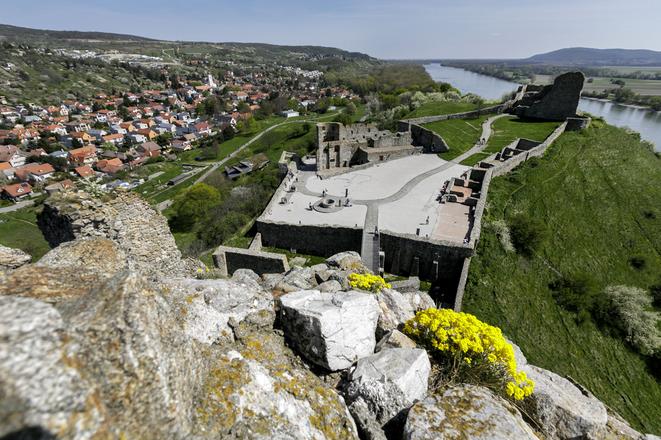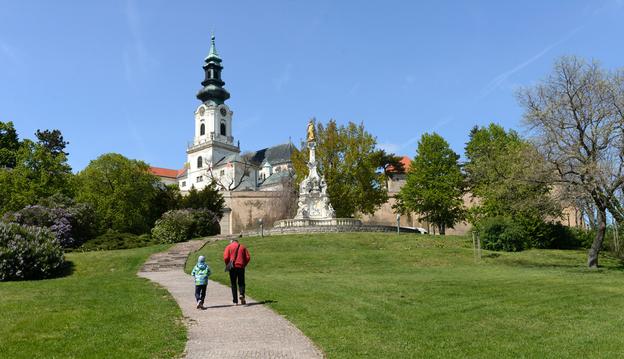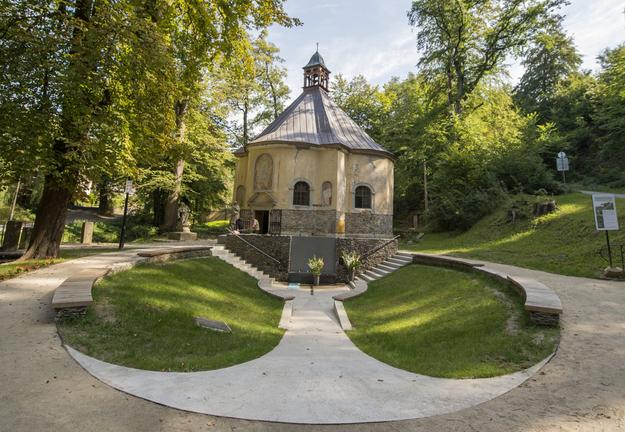Missionaries Cyril and Methodius, the co-patrons of Europe, visited and worked in a number of European countries. Now, tourists can follow in their footsteps.
 View Slovakia’s oldest city through a kaleidoscopic lens with our Nitra city guide. (source: Spectacular Slovakia)
View Slovakia’s oldest city through a kaleidoscopic lens with our Nitra city guide. (source: Spectacular Slovakia)
The Council of Europe certified the route named after the missionaries, involving several countries in central and southeastern Europe, including Slovakia, in April of this year alongside four other European routes.
“The Cyril and Methodius Route aims to raise awareness of common European heritage,” the Council of Europe said. The route contributes to the development of cultural cooperation throughout Europe, it added, and promotes European values.
The route thus enjoys the same status as the well-known Santiago de Compostela pilgrim routes and more than 40 others.
In Slovakia, tourists can find 33 stops linked to the missionaries, spreading across the country’s western regions.
What to see in Slovakia
Most of the places people can set off to are either churches or castles and ancient wooden fortresses.
Well-preserved and popular castles in Nitra, Trenčín and Bratislava are on the list of sights. The route in Slovakia is made up of 13 wooden forts as well, including the Ostrá Skala fortress in Vyšný Kubín, Žilina Region.
Pilgrimage sites Hájiček in Trstín, Trnava Region, and Marianka in Bratislava are also worth visiting.
Although there are 33 strategic localities to explore in the west of Slovakia, according to the official website of the Cyril and Methodius Route, another website mapping the 863 missions of Cyril and Methodius in Great Moravia focuses “only” on 24 places in the regions of Bratislava, Trnava and Nitra.
Four branches
This European cultural route has four branches, each of which is significant for different reasons.
For instance, the first path focuses on the territory of Great Moravia, nowadays Slovakia and the Czech Republic, where Cyril and Methodius did most of their work.
Another route, in southeastern Europe, draws attention to their legacy continued by their disciples. The third route covers Austria, Bavaria, Slovenia, and Italy. It symbolises the patrons’ journey to Rome, where they sought the recognition of the Christian liturgy in Old Slavonic.
The last branch of this European cultural route takes tourists to the south of Poland because the teachings of Cyril and Methodius reached this region as well.
Other routes linked to Slovakia
In 2021, the Council of Europe certified four other cultural routes in other parts of Europe in addition to the Cyril and Methodius Route.
The Aeneas Route is linked to the legend of the ancient hero Aeneas. The Alvar Aalto Route celebrates Finnish architect Alvar Aalto, and the European Route d’Artagnan gives the story of French musketeer d’Artagnan a whole new dimension.
The last certified route is called the Iron Age Danube Route. Despite the Danube being mentioned in its name, Slovakia is not a part of the route.
However, three other routes certified in the previous years – the Saint Martin of Tours Route, Transromanica, and the Iron Curtain Trail – run through Slovakia.
Spectacular Slovakia travel guides
A helping hand in the heart of Europe thanks to the Slovakia travel guide with more than 1,000 photos and hundred of tourist spots.
Detailed travel guide to the Tatras introduces you to the whole region around the Tatra mountains, including attractions on the Polish side.
Lost in Bratislava? Impossible with our City Guide!
See some selected travel articles, podcasts, traveller's needs as well as other guides dedicated to Nitra, Trenčín Region, Trnava Region and Žilina Region



 Devín Castle is one of the stops on the Cyril and Methodius European Cultural Route. (source: Dano Veselský/TASR)
Devín Castle is one of the stops on the Cyril and Methodius European Cultural Route. (source: Dano Veselský/TASR)
 The Valy fort was an important centre of the Great Moravian Empire and today is a rich archaeological site. (source: Martin Palkovič/TASR)
The Valy fort was an important centre of the Great Moravian Empire and today is a rich archaeological site. (source: Martin Palkovič/TASR)
 Nitra Castle. (source: Henrich Mišovič/TASR)
Nitra Castle. (source: Henrich Mišovič/TASR)
 A chapel in the Marianka pilgrimage site. (source: Martin Baumann/TASR)
A chapel in the Marianka pilgrimage site. (source: Martin Baumann/TASR)